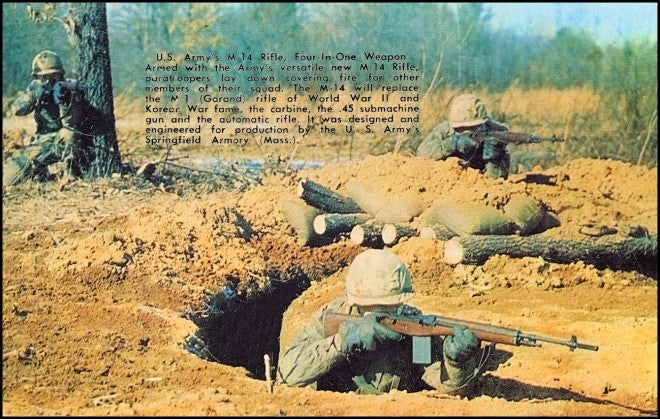As in all Small Caliber Book Reviews here at TFB, I will be covering the area of relevance and strengths and weaknesses of the book, as well as whether it is more introductory or advanced.
To write my ongoing series of posts on the Light Rifle, I first had to hit the books. One of the items on my reading list was Edward Clinton Ezell’s The Great Rifle Controversy; which chronicles the development of the modern infantry rifle from the end of World War Two until the 1980s, and the adoption of the 5.56mm round by NATO.
Ezell’s volume provides a “zoomed-out” picture of rifle development during this period. Unlike Steven’s book on the M14, Ezell’s volume is neither designed as a technical reference volume, nor is the information in it perfectly accurate. However, Ezell provides a perspective that ties the events from 1945-1984 together into the bigger picture, including both political and personal detail that is absent from more technical works. This is the book’s biggest strength, and I would recommend readers who are interested in the subject as a whole begin with this book and move on to books such as The Black Rifle and US Rifle M14.
Ezell is clear, too, about his view of modern infantry weapons development. He urges the immediate discard of the older, conservative system of small arms development and the adoption of a structure that will ensure continual improvement:
As an historian, I am concerned that historians of the future will judge the small caliber research and development activities of the last decades of this century as harshly as we judge the final decades of the nineteenth century. We look back on those years as a period of technological stagnancy in which product-improvement was favored over the adoption of new designs. Many new ideas were examined, but for financial and technological reasons few were adopted. The Ordnance Department prided itself in the fact that thirteen of the sixty-eight parts used in the 1873 and later-model trapdoor Springfield rifles were hold-overs from the Model 1855 muzzle-loading rifle. This may have contributed to production efficiency, but it did little to encourage the adoption of new designs. The small arms community must break out of our traditional patterns of thought and behavior and act boldly on carefully analyzed and intelligently presented programs for small caliber research and development. If they can break from the past and move effectively into the future, subsequent generations of infantrymen may praise this community for its activities. If they continue business as usual, those same infantrymen – or at least those who survive – may well have reason to curse them.
It’s not hard to image that, were Ezell alive today, he would look upon the current M4A1 rifle with considerable regret, as his time promised the development of much more sophisticated systems, such as those demonstrated in the Advanced Combat Rifle program. Though at times my writing seems conservative in this regard, I do feel the same way; I simply do not see current competitor rifles as providing a measurable advance over the AR-15 family.
The Great Rifle Controversy is unfortunately now out of print. It can be purchased secondhand, though the going rate is currently over $160. I would recommend those interested in reading the book shop around; from time to time copies sell for a lot less.
 Your Privacy Choices
Your Privacy Choices
